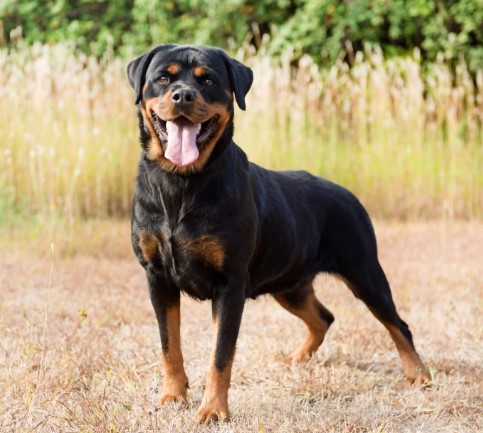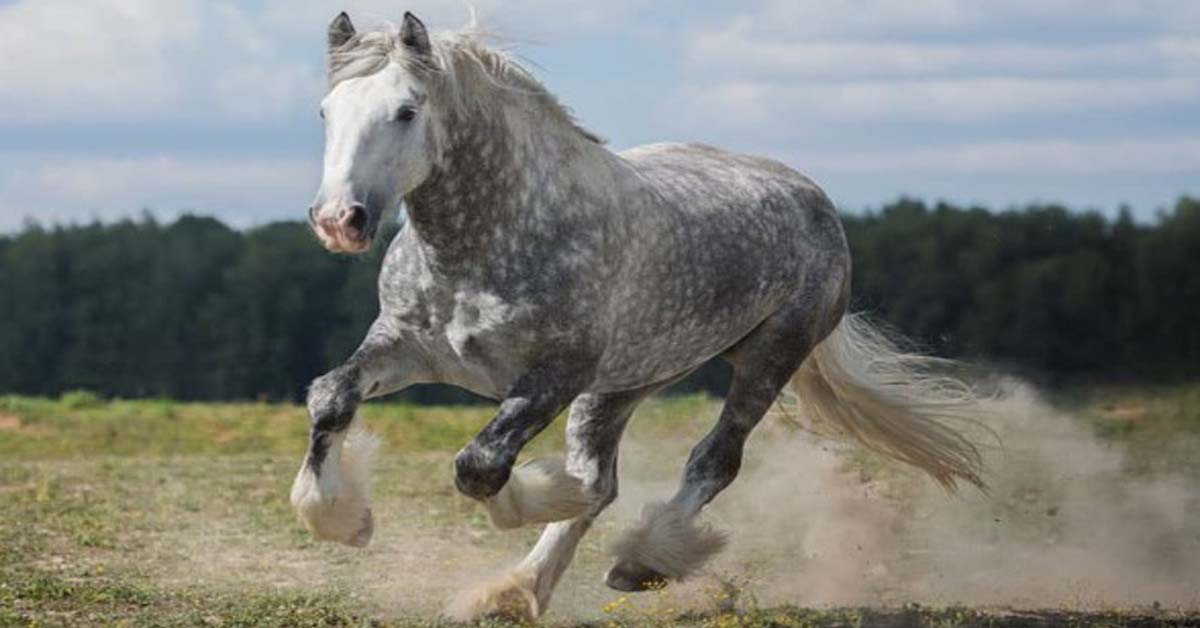The American Wirehair is a medium-sized cat with a notably robust build. This feline exhibits substantial musculature and a dense bone structure, contributing to a round and solid appearance that may suggest a substantial weight when lifted.
Known for its strength, the Wirehair boasts a broad chest, muscular neck, strong jaws, and a well-developed muzzle. The legs are characterized by thickness and strength, with each component of the cat’s physique exhibiting well-rounded development. This breed bears a resemblance to its ancestors, which were utilized for rodent control in barns and houses.
The Wirehair’s coat resembles that of the American Shorthair, with the notable distinction of a crimped texture. The coat is thick and dense, particularly during the winter when it becomes long and luxuriant. Its texture is relatively stiff, providing protection, and the crimping adds a distinct firmness to the overall feel.
ORIGIN: United States
HEIGHT: 9–11 inches
WEIGHT: 8–12 pounds
LIFE SPAN: 10–16 years
COLORS: white-black / ebony red / orange-blue / gray lavender / Silverstream / beige/tan fawn
American Wirehair Characteristics
The American Wirehair is a medium-sized cat with a charming expression and regular features. Its wiry coat, extending to the whiskers, is thick, firm, and springy, often likened to the texture of steel wool. This distinctive coat can appear in nearly any color or pattern.
Despite its wired coat, the American Wirehair’s personality is anything but. This cat is characterized by a calm and patient demeanor, taking life in stride. It particularly enjoys bird watching from a sunny windowsill, and its hunting skills come in handy when dealing with household insects.
When well-socialized as a kitten, the American Wirehair is generally amiable and open to interacting with guests. With a weight ranging from six to 11 pounds, it can be a suitable choice for families with older children who treat it with respect. Supervision is recommended around young children and toddlers to ensure proper handling. Additionally, the American Wirehair can coexist well with cat-friendly dogs in the household.
While there may be a misconception that the American Wirehair’s coat is hypoallergenic due to its texture, this is not accurate. Allergies are triggered by dander, the shed of dead skin cells common to all cats. No scientific evidence supports the claim that any specific breed or crossbreed is more or less allergenic than others. While some individuals with allergies may experience milder reactions to certain cats, reputable breeders do not guarantee hypoallergenic.
To care for the American Wirehair, regular weekly combing is recommended to maintain its unique coat. Keeping this cat indoors is advised to protect it from potential dangers such as cars, diseases spread by other cats, and attacks from other animals.
| Adaptability: 5Point | Grooming: 1Point |
| Energy Level: 3Point | Health Issues: 3Point |
| Child Friendly: 4Point | Stranger Friendly: 3Point |
| Social Needs: 3Point | Affectionate: 5Point |
| Shedding Level: 1Point | Dog Friendly: 5Point |
| Intelligence: 3Point |

History Of American Wirehair Cat
The American Wirehair originated as a spontaneous mutation within the domestic cat population, giving rise to a litter with distinct fur.
In 1966, two barn cats named Fluffy and Booty, residing on a small farm in upstate New York, produced an extraordinary litter with unique hair. Unfortunately, only one kitten from this litter survived. Subsequent litters from Fluffy and Booty did not yield kittens with wiry hair, suggesting that the peculiar trait was a one-time occurrence. The surviving kitten, a red and white bicolor male named Adam, caught the attention of Joan O’Shea from Vernon, New York.
Upon learning about Adam, O’Shea, who owned Rex cats, was drawn to the long-legged, big-eared kitten with curly fur. Despite realizing that Adam wasn’t a Rex, but possibly a new breed altogether, O’Shea fell in love with him. Adam became part of Joan’s family and later produced litters with local cats, passing on the wiry coat trait to some of the kittens.
Further investigation revealed that the gene responsible for the wirehair coat is dominant, requiring only one parent to possess the gene to produce wirehair offspring. To confirm that the breed was distinct from existing Rex breeds, hair samples from Adam were sent to renowned British cat geneticists for analysis.
Analysis of the hair samples indicated that the coat was unique and not linked to Cornish or Devon Rex breeds.
Today, all American Wirehairs trace their ancestry back to Adam or one of his kittens, notably Amy. Although the breed remains relatively rare, it has gained recognition from the four largest cat associations in North America.
Appearance
The American Wirehair is characterized by its crimped coat featuring curly or wavy hair on the body and ears, with some individuals even boasting curly whiskers. This short-haired cat can come in solid black, blue, white, red, or cream colors. Various coat patterns, including chinchilla, smoke, cameo, calico, tabby, and bicolor, contribute to the breed’s diverse appearance. The large eyes of the American Wirehair tilt slightly upwards at the outer corners, exhibiting blue, green, or gold hues.
The unique crimped texture of the American Wirehair’s coat helps keep loose hair close to their bodies, leading some to consider them hypoallergenic. While not entirely allergen-free, their shedding hair may be less irritating to individuals with allergies. Prospective owners are advised to spend time with the breed before bringing home a kitten to gauge their reaction to allergies.
Comparisons between the American Wirehair and the American Shorthair highlight their similarities, with the primary distinction lying in the texture of their hair. Unlike the American Shorthair, the American Wirehair possesses a coarse, curly coat.
Temperament
The American Wirehair is a genuine companion breed, known for its affectionate and tranquil nature. This easygoing cat harmonizes well with various household members, including dogs, other cats, children, and seniors. With an abundance of love to share, this breed is likely to form strong bonds with every individual in the household.
Wirehairs exhibit intelligence, playfulness, and independence. They are active and affectionate without being overly assertive or demanding. While they enjoy interactive play with their human companions, they are equally content spending alone time engaging with toys.
When not engaged in play, they relish snuggling up next to their human counterparts, offering comforting hugs and purrs. These cats embody sweetness, gentleness, and friendliness, making them delightful and amiable pets.
American Wirehair Personality
The American Wirehair is anticipated to share a similar personality with the American Shorthair: adaptable, good-natured, affectionate, and playful. Often described as a clown, this cat exhibits athleticism with a moderate activity level. While enjoying playtime, he doesn’t insist on excessive attention or activity. As a well-built, working-class cat, he demonstrates intelligence and relishes playing with puzzle toys and interactive toys. With a friendly disposition, he is not inclined to hide when visitors are present.
The American Wirehair is characterized as a calm cat that adores people, frequently following them throughout the home. Showing a keen interest in his surroundings, he may or may not be a lap cat but will always appreciate having a spot next to you on the sofa or at the end of the bed.
Health Issue Of American Wirehair
All cats carry the potential for genetic health issues, just like humans are susceptible to hereditary diseases. Be cautious of any breeder who claims their breed is entirely free of health or genetic problems; such statements may indicate misinformation or deception. Steer clear of breeders who don’t provide health guarantees for kittens or assert that their breed is 100 percent healthy. Additionally, avoid those who claim their kittens are exempt from common health concerns.
While the American Wirehair is generally healthy, it can share some health issues with the American Shorthair due to potential crossbreeding, such as hypertrophic cardiomyopathy (HCM), the most prevalent feline heart disease. HCM leads to the thickening of the heart muscle, and its presence can be confirmed through an echocardiogram. Be skeptical of breeders who assert having HCM-free lines, as no guarantee exists against its development.
Responsible breeders screen American Wirehairs for HCM, and those identified with the condition should be excluded from breeding programs. Ensure that you purchase a kitten from parents tested for this disease and consider obtaining it from breeders with a written health guarantee.
After welcoming a new kitten into your home, you play a pivotal role in safeguarding her health. Obesity is a common issue, and maintaining the American Wirehair at an appropriate weight is crucial for overall well-being. Leverage preventive measures to ensure a healthy and thriving cat throughout her life.

Care Tips For American Wirehair
Maintaining the unique coat of the American Wirehair requires minimal care. Brushing or combing may harm it, making such grooming unnecessary except during spring shedding. Infrequent bathing is generally adequate.
To prevent periodontal disease, brush the cat’s teeth daily or at least weekly. Trim nails every two weeks, and use a soft, damp cloth to wipe the corners of the eyes, using a separate area for each eye to prevent infection spread.
Perform weekly ear checks, cleaning with a cotton ball or soft damp cloth moistened with a 50-50 cider vinegar and warm water mixture if needed. Avoid using cotton swabs, as they can damage the inner ear.
Maintain a spotlessly clean litter box, as cats are meticulous about bathroom hygiene. Consider keeping the American Wirehair indoors exclusively to prevent diseases, potential attacks, or accidents like car collisions.
Outdoor exposure poses risks, including theft by someone captivated by this unique cat without intending to pay for it.
Best Food For
- Hill’s Prescription Diet y/d with Chicken Wet Cat Food
- Hill’s Prescription Diet y/d Chicken Flavor Dry Cat Food
- Hill’s Science Diet Adult Chicken Recipe Cat Food
- Hill’s Science Diet Adult Ocean Fish Entrée Cat Food
Feeding
Consider the recent ancestry of the American Wirehair, sharing roots with large wild cats like tigers, lions, and panthers. When feeding your American Wirehair, keep this in mind. In the wild, adult cheetahs don’t chew grass, eat apples, or drink milk, and puma cubs don’t consume milk from other animals. While these examples may seem amusing, they highlight how some owners feed their American Wirehairs. Thus, it’s crucial to understand their dietary needs.
American Wirehairs differ from dogs and humans in their eating habits. Their diet primarily consists of protein and fat, unlike humans who are omnivores consuming vegetables and fruits. Feeding them like dogs, which often involves foods rich in carbohydrates, can be detrimental. High-carb diets can lead to weight gain and put American Wirehairs at risk of diabetes, as their systems are not designed for carbohydrate processing. To maintain their health, it’s essential to adhere to a diet suitable for their carnivorous nature.
Grooming
For the American Wirehair, less grooming is better due to its unique coat. Avoid excessive brushing or combing, as it can potentially damage the coat. Unless shedding excessively, it’s advisable to let it be. Regular bathing, however, can help eliminate dead hair and address any greasy feeling that may develop in the coat.
Introducing your American Wirehair to bathing during kittenhood, making it a positive experience, increases the likelihood of acceptance. Additionally, weekly nail trimming, routine tooth brushing using vet-approved pet toothpaste, and occasional ear cleaning with vet-recommended solutions and cotton balls are the only other care requirements.
Training
Thanks to their intelligence, American Wirehairs are highly trainable. They can easily learn tricks and even be taught to fetch. Utilizing positive reinforcement is an effective approach for training the American Wirehair according to your preferences.
Exercise
American Wirehairs thrive on both mental and physical stimulation due to their playful and intelligent nature. Compared to other breeds, they require more exercise. Incorporating interactive toys into their routine is an excellent way to meet their exercise needs. Engaging in daily play sessions with your American Wirehair is beneficial, as they don’t demand constant social interaction but find happiness in regular play. If possible, providing both indoor and outdoor environments is ideal, allowing the American Wirehair to explore the outdoors, indulge their hunting instincts, and ensure their safety by bringing them indoors at night.
Adopting Centar
Acquiring adult American Wirehairs is not limited to breeders. While pedigree American Wirehairs may be uncommon in shelters, domestic shorthair cats are readily available. If you’re interested in having a pedigree cat, reach out to local shelters, explore Petfinder listings, or inquire with breeders about American Wirehairs in need of new homes. Occasionally, breeders may seek pet homes for cats after their show or breeding careers.
Regardless of the source, it’s crucial to establish a solid contract with the seller, shelter, or rescue group. Familiarize yourself with any applicable “pet lemon laws” in your state to ensure a clear understanding of your rights and remedies. Once you find a suitable American Wirehair, promptly take your kitten or adult cat to the vet for a comprehensive health check and to establish preventive measures against potential health issues.
American Wirehair Video
See More Cat Breeds For Further Research
FAQs
American Wirehair Price
Although the American Wirehair is relatively well-known, it remains a rare breed. Typically, American Wirehair kittens are priced in the range of $800 to $1200.
How can you identify an American Wirehair?
The American Wirehair derives its name from its coarse fur, often likened to steel wool. This breed is recognized for its crimped coat featuring curly or wavy hair on its body and in its ears, with some individuals even having curly whiskers. As a short-haired cat, the American Wirehair can be found in solid black, blue, white, red, or cream.
Are American Wirehairs friendly?
American Wirehairs are characterized as good-natured and easy-going cats, making them popular with families due to their high tolerance for children. While generally quiet, they can exhibit playfulness even in their later years. Female cats tend to be more active than males, who are generally more laid-back.
What sets the American Wirehair breed apart?
The American Wirehair is distinguished from other breeds by its wiry and dense coat, often described as having a feel similar to steel wool or sheep’s wool. The wirehair coat exhibits various degrees of wiriness, ranging from barbed to curly, with individual hairs displaying pinching, hooking, or curling.
What is the rarest pattern on a cat?
Among all color patterns, albino is considered the rarest. Achieving an albino cat requires both parent cats to possess recessive genes, and the offspring must inherit both for this unique color pattern to manifest.












3 thoughts on “American Wirehair Cat: Personality, Care, And Many More Best Full Information For You…”